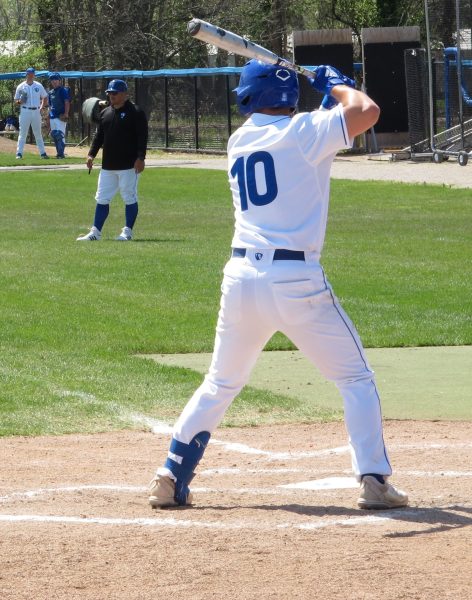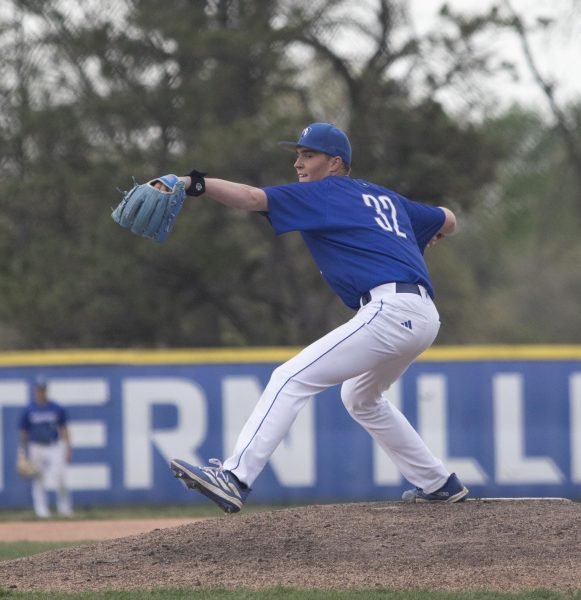Students fight invasive species
Douglas-Hart Nature Center workers and volunteers continued their efforts Saturday to protect native plant species while also eliminating invasive species.
Saturday was Douglas-Hart Nature Center’s monthly Volunteer Day, which welcomes students and community members to the nature center to work on various projects both indoors and outdoors.
While rain and cold temperatures prevented volunteers from taking on their original project of clearing bush honeysuckle from the nature center, students continued to take further steps to help the nature center.
Volunteers took steps to promote the diversity of plant life in the nature center to counteract the effects of honeysuckle.
Lauren VanHyning, a senior biology major at Eastern, and Katie Dunlap, a sophomore horticulture major at Lake Land College, huddled around a large bag in the basement of the nature center’s visitors center. Here, they rummaged through a basket of dried plant stems and flower heads.
Taking the dried plants firmly in their hands, VanHyning and Dunlop used scissors, pliers and their bare hands to break open seedpods and scrape out seeds to place in the large bag.
The seeds VanHyning and Dunlop collected will be used to reseed the nature center early next year around February and March, Marissa Grant, the land stewardship director at the center, said.
VanHyning has volunteered at the nature center since she transferred to Eastern in Fall 2010. She said she enjoys being able to work outdoors while also helping to promote diversity and conservation.
“I love actually getting to do some of the stuff I learn about in class,” she said. “I get to be outside doing more conservation work and stuff like that instead of educational programs inside.”
Dunlap volunteered at the nature center while she was at Charleston High School and said she has continued volunteering since, enjoying the ability to practice what she has learned.
“I learned it there in the classroom, and then I learned how to actually implement it here,” she said.
Grant said honeysuckle is an invasive species that has threatened the nature center for years.
“Bush honeysuckle is our main culprit at the nature center,” she said. “It is native to Europe and Asia, and it was brought over here and planted at Douglas-Hart in the 1970s.”
Honeysuckle was promoted by the government as a plant that could prevent soil erosion while also providing berries for wildlife, Grant said. However, as honeysuckle was introduced to areas across the United States, problems began to arise.
“We have since learned that it is invasive, and because it is from Europe and Asia, it has no natural predators,” Grant explained. “It will take over an area, and it can out-compete our native vegetation for light, or soil resources and for moisture.”
Honeysuckle has been a constant problem since its introduction and continues to present challenges, she said.
“Instead of having a forest with a diversity of species, we have areas where there are trees and then a shrub layer of nothing but honeysuckle,” Grant said.
As well, the berries honeysuckle produces are not nutritious for wildlife and only serve to spread the plant across an area, she said.
To prevent honeysuckle from spreading in the nature center, workers and volunteers scope out the bushes and dig out the plant, roots and all. It is important to dig up the roots because the honeysuckle can continue to grow from existing root systems, Grant said. Another method volunteers use to eliminate the honeysuckle is to cut the bush off as near to the root as possible and then apply an herbicide.
Tim Deters can be reached at 581-2812 or [email protected].












































